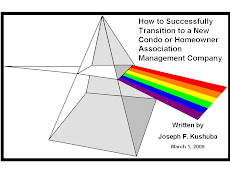
 Many Board members are under qualified, under experienced or on the BoD for the wrong reasons. It is alarming how many condo or homeowner association’s Board of Directors (BoD) are populated by individuals who provide little or nothing of real value, or, worse, actually work against the interests of the association. Some of these members are born with these characteristics and some of them are home grown, after many years of practice. They frequently have little skill in group dynamics and the art of working in teams. The result is that individual Board members default to what they do best in order to control the situation. In other words, some directors revert to behaviors that manipulate others or the environment so they can get what they want. How can you spot these manipulative behaviors and how can you neutralize them. Identifying them is the easy part. What to do about is much harder. These are the “How-To Guru’s” 10 Worst Dressed Board members, in no particular order of disruptive behaviors.
Many Board members are under qualified, under experienced or on the BoD for the wrong reasons. It is alarming how many condo or homeowner association’s Board of Directors (BoD) are populated by individuals who provide little or nothing of real value, or, worse, actually work against the interests of the association. Some of these members are born with these characteristics and some of them are home grown, after many years of practice. They frequently have little skill in group dynamics and the art of working in teams. The result is that individual Board members default to what they do best in order to control the situation. In other words, some directors revert to behaviors that manipulate others or the environment so they can get what they want. How can you spot these manipulative behaviors and how can you neutralize them. Identifying them is the easy part. What to do about is much harder. These are the “How-To Guru’s” 10 Worst Dressed Board members, in no particular order of disruptive behaviors.Worry Monger. One of the primary responsibilities of a BoD is to make timely decisions. This ultimately requires that members take a position by stating their personal opinion or voting on a matter. This can be excruciating pain for the Worry Monger. They prefer to be non-committal, ride the fence to see what way the wind is blowing or worse yet, make no decision at all. What if I am wrong? What will other people say? How can I be 100% sure this is the correct decision? In their minds, no decision or a delayed decision can be a wise decision. They are experts at delay tactics and say things like; We need more information or data. Let’s form a study group or committee. That will never work. Let’s discuss it at another time. Sounds good, but I don’t think we can sell it. We have never done it that way before. You can easily spot them because they tend hide behind questions and rarely state what they really think. The Worry Monger can be one of the most destructive types of Board members, because they shut down effective and timely decision making.
Solution: These folks are slippery and hard to pin down. They usually have a lot of practice at shifting responsibility and in the art of delay. If they are couching their opinion by asking a question, then call them out by asking them, “What is your opinion on that matter? or “What do you think we should do?” If they are inappropriately pressing for more data, ask them, “Why would that additional information make a difference?” or “Can we make a reasonable decision now, rather than waiting for this additional information?” Many times, these people need lots of facts and information. Another technique is to document all of the relevant information on decision being requested of the BoD in the form of a “decision package”.
Dominator. This type of BoD member is in constant reactive mode and is a poor listener. S/he is often viewed as controlling, opinionated, egotistical, and uses more than her/his unfair share of air time. They can be overpowering, overcontrolling, and bossy to others. Their motto is “it’s my way or the highway!”, as they have already figured out the ideal solution or action that should be taken. They are aggressive, refuse to share responsibilities, and can be unappreciative of other’s contributions.
Solution: A BoD member or chair should speak privately to the Dominator in a “heart-to-heart” conversation that is direct, clear, specific, and to the point. S/he should be reminded that this style of managing can be very damaging to the team and the repercussions that can occur. If the dominating behavior persists, a public response is necessary. During the Board meeting, when the Dominator presents an idea, the first question the chair should ask is, “What does everyone else think about that idea?” The chair also might ask, “We have heard what (Dominator’s name) thinks, does anyone have an alternative position?” If the Dominator happens to sit in the chair position, the chair-elect — with support from other officers — may need to be the person who steps in to privately offer support to this individual by working through agendas together or serving as a mentor. S/he should be reminded as a member of the BoD group; they do not have a special privilege to pursue personal agendas or ideas not commonly shared as priorities of the whole.
Seat Warmer. These “do-nothings” rarely challenge/probe or come out from their hiding. They avoid work like the plague and can sit through an entire meeting without saying a word, causing the rest of the BoD to wonder why even bothered running for the Board. This individual may not pay attention during meetings, typically does not follow through on assignments, and exhibits great amounts of apathy. They may be in over their head or totally out of their league of capability. Overwhelmed, s/he shuts down, withdrawing from participation.
Solution: Although this type of member is not usually destructive to the Board, they are also not a contributor, leaving the bulk of work to others. If they are out of their league, they might benefit from educational and training materials. A fellow Board member might serve as a mentor to them for a period of time by walking through the agenda, sharing methods for reviewing Board materials, and debriefing after each meeting. The chair could draw the person out by asking them for their opinions during a meeting or praising them when they offer one that is unsolicited. If they refuse to do any work, ask them why and reinforce that everyone has to carry the load. Continue to ask them to perform duties that are within their capability and thank them when they agree and particularly if they complete an assignment.
Weak-Kneed. These individuals live in fear of being personally tainted by any kind of controversy. They lack a key characteristic of any good BoD member— courage. With every challenge they begin hyperventilating for a settlement, even if it means selling out on principle or against the prevailing better judgment. They avoid risk and never take a stand in the face of ambiguity or adversity. They do not confront problems directly and rarely take action based on what they believe is right.
Solution: These people need lots of reassurance and reinforcement. Encourage them to take calculated risks and ask themselves, “What is the worst thing that could happen?” Then, help them decide if proceeding is worth the risk. Championing something that one believes is right or important requires conviction. It is not always easy to go against the mainstream or choose the more disruptive course of action. Therefore, helping the person to know what is most important to them will strengthen their convictions and values. Ask them questions like; What is most important to you? What do you value the most? What is worth “fighting” or standing up for? On which of you values will you never compromise?
One-Trick Pony. The One-Trick Pony Board member is truly excited about being on the BoD because s/he can help "get the right things done," but he has no idea how to go about governing an association or running a business. S/he comes to the Board one or two issues, which suck up endless discussion time meeting after meeting. The person's narrow focus is an obsession in his/her life, and s/he draws it into every conversation. S/he also misinterprets Board materials related to his/her pet issues and fails to read unrelated Board materials prior to the meeting, which results in unpreparedness.
Solution: The short-term solution with this type of Board member is, first, a private conversation acknowledging the problematic individual's concern, defining the inappropriateness of the behavior, and emphasizing the need to read materials and address issues that cover the entire range of the association’s business. Second, if One-Trick Pony remains so, then during the meeting the chair can appropriately and tactfully restate the opinion expressed by the individual and directly ask the relevance of the statement to the current debate. Long-term, the options are few. If a BoD decision has already been made on the person’s pet issue, then reinforce that the decision has already been made and that it will not be revisited at this time. Try to convince them to recognize that the association has competing priorities and that the Board's job is to focus on the big picture. Such understanding comes with persistent, consistent Board training.
Nay-Sayer. This type of Board member is critical of almost any idea or solution offered, turning complaining and whining into new art forms. A Nay-Sayer often rolls his/her eyes, shakes his/her head, or inhales loudly with dramatic flair but offers little to advance the conversation. They discredit ideas before they’ve been fully explained and have a complete fear of the unknown. Their favorite phrase is: "That’ll never work."
Solution: The chair should provide a safe, open forum to air each BoD member’s comments and encourage the Board to actively listen with an open mind and suspend personal judgment until all ideas have been fully explored. The chair also should employ the Board's rules of engagement to ensure that diverse opinions are shared. When the Nay-Sayer finishes nixing, the chair should ask if anyone perceives positive aspects in the concept presented.
Flame Thrower. The Flame Thrower is volatile. They appear to have no impulse control or self-discipline and are intent at tearing things down. They often make outrageous statements, feed the rumor mill, and are driven to comment on anything and everything. They are often characterized as "troublesome” or “loose cannons,” since they exhibit unfocused, unpredictable, temperamental, and egotistic behaviors. They are aggressive and believe that a strong offense is a good defense.
Solution: The worst thing you can do is ignore the situation; it will only burn further out of control. The first step is a private conversation focused on the how this behavior is disrespectful to other BoD members. The chair should address the concerns of inappropriateness and review the rules of engagement for the Board. Publicly, the chair must not react to the inappropriate remarks or escalate the situation. Instead they should douse the situation by trying to stay focused on the big picture or the particular agenda item being discussed. They should enforce the rules of engagement (i.e. Robert's Rules of Order) so the BoD may have an orderly, balanced debate. If the situation becomes out of hand and all means of control have been exhausted, then it is perfectly acceptable for the chair to threaten to end or actually end the meeting right then and there.
Pontificator. This type of BoD member is an expert at distracting a Board and taking them off into the weeds of Never Land. They do not follow an established agenda because they are too busy promoting their own interests or issues that are important to them at the time. They will often give their opinion on such things as “matters of state,” world events, social trends, the association’s history, or his/her own area of expertise. They like to hear themselves talk and burn up the valuable time of the BoD on unrelated topics.
Solution: The best way to assure that no one derails a BoD meeting is to first have an established agenda of topics and expected durations. You now have a basis for keeping the meeting on track. When the Pontificator starts to take the meeting in a different and unrelated direction, the chair should ask him/her, “How is that related to the agenda item that we are now discussing? If it is not, then let’s get back on track.” or something like, “That is very useful information, but let’s get back to our agenda item.”
Secret Service. Closely related to the Worry Monger, this type of BoD member is always looking over his/her shoulder and is shrouded in secrecy. Knowledge is power to them. They hold things very close to the vest and only give limited amounts of information to association members. Their motto might be, “What they don’t know won’t hurt them.” or “That information is on a need to know basis, and they do not need to know.” Another factor might be that since they do not want to look like they don’t know what they are doing or open themselves up to criticism, they should wait until everything is thoroughly checked, verified, and finalized.
Solution: Progressive BoD’s must realize that timely communications to their association members is not only a responsibility, but also a duty and requirement for running an effective association. The Secret Service members should be reassured that it is in their best interest to help alleviate the fears and concerns of association members. They should be encouraged at every opportunity to communicate early and often. They must be helped to realize that it is OK to sometimes to put out “half-baked” information as long as they tell association members that everything has not yet been finalized and things could change.
Sensitive Tooth. Any strength can also be a weakness and this type of BoD member can be overly sensitive to the needs and concerns of others. They become “shrinking violets” whenever a tough decision has to be made, particularly if it involves people. Their judgment becomes clouded because someone could be hurt, even though it may be in the best interest of the association. They can be at a loss when confronted with situations that require basic technical expertise or clear thinking. They may sweep problems under the rug when in conflict, may ignore the task in favor of relationship issues, and may take criticism personally. Unfortunately, this approach to problems won’t get them resolved, they’ll only grow.
Solution: These BoD members may need encouragement to recognize and pay as much attention to the details of the task as to the people. Help them understand that criticism or rejection is often objective and should not be taken personally. If they are uncomfortable making unpopular decisions, then don’t put them in the lead position for making them, if at all possible. If this is not possible, come to their rescue and don’t leave them hanging on a limb when confronted by angry association members.
Even though this is 10 item list, I will add an 11th.
Incompetence. There is no way to “sugar coat” this type of BoD member. They are in way over their head, which may be the result of no one else volunteering for the position or a miscalculation on their part of their own capability to perform the job. These are not necessarily bad people and their hearts are very likely in the right place. But the fact is that they may not have the necessary skills, experiences, or temperament to be an effective Board member.
Solution: Try to use these people for non-critical activities and minimize the damage that they could do. There is usually enough work to go around for everyone and you certainly do not want to discourage a “willing worker.” If this is not possible, then you may have to spend time and effort in mentoring and educating this Board member. If that does not work, you may have to employ “work around” strategies and hope for a quick replacement.









No comments:
Post a Comment